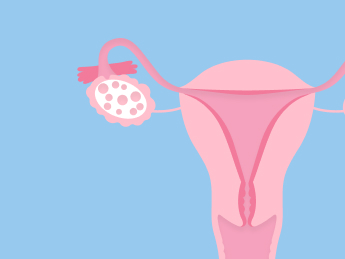PCOS Differential Diagnosis: Pituitary Tumour – Antai Hospital

Differential diagnosis is key to to avoid misdiagnosis and wrongful treatment for patients suffering from PCOS. A pituitary tumour is commonly misdiagnosed as PCOS for a lot of patients because of how similar the two are in terms of fertility symptoms exhibited. Women who develop a pituitary tumour (benign) will also suffer from amenorrhea, obesity and infertility. Due to this misdiagnosis, some doctors even conduct PCOS treatment for these patients, where it is completely ineffective, resulting in a waste of resources and time.
Symptoms of a pituitary tumour
The pituitary gland is responsible for the regulation and production of several important hormones and functions in the body, thus a presence of an adenoma or microadenoma may add pressure on the gland and nearby structures (depending on the size). Some may not show immediate symptoms, however they do play a role in affecting your menses and fertility such as:
- Anovulation
- Amenorrhea (No periods)
- Weight Gain
- Infertility
- Recurrent Miscarriage
- Sexual dysfunction
The above symptoms are very typical symptoms of PCOS, which can lead to a misdiagnosis if proper diagnosis and differential is not conducted.
How do we differentiate PCOS and a Pituitary tumour?
Differential diagnosis for pituitary tumour is to rely on B ultrasound. The B-mode ultrasound of patients with Polycystic Ovarian Syndrome (PCOS) can clearly show multiple follicles developing simultaneously inside the ovary, while the B-mode ultrasound of patients with pituitary tumour does not show such an indication on the ovaries. Another auxiliary differential diagnosis is by using magnetic resonance imaging (MRI). 90% of patients with pituitary tumours can find microadenomas on the pituitary gland. There is no microadenoma on the pituitary gland of patients with polycystic ovary syndrome (PCOS).
Furthermore, patients with polycystic ovarian syndrome generally do not have abnormal Prolactin levels, often negligible changes. However, pituitary tumor patients have a large majority of patients with high prolactin, relative androgen levels are not too high, on the contrary, for PCOS patients, they observe high levels of androgen hormones (testosterone). The differential diagnosis of these two diseases is also very important!

Treatment of PCOS & Pituitary Tumour are not the same
- Pituitary Tumor:
Endoscopic transnasal transsphenoidal approach. This usually enables your doctor to remove the tumour through your nose and sinuses without an external incision. No other part of your brain is affected, and there’s no visible scar. Large tumours may be difficult to remove this way, especially if a tumour has invaded nearby nerves or brain tissue.
- PCOS Treatment:
At Antai Hospital, we offer ovarian laparoscopic treatment where abnormal testicular tissues fused within the ovaries are accurately identified using isotopic tracers and removed. This treatment has a success rate of over 95% and patients will have her menses cycle restored with all related physical symptoms subsided. This treatment comes with a full refund guaranteed, and ensures you can have natural pregnancies with no complications.